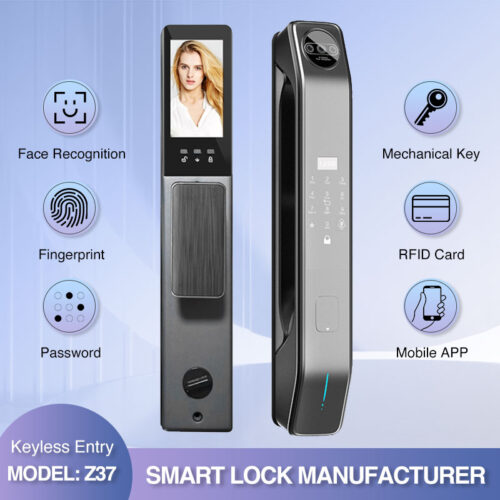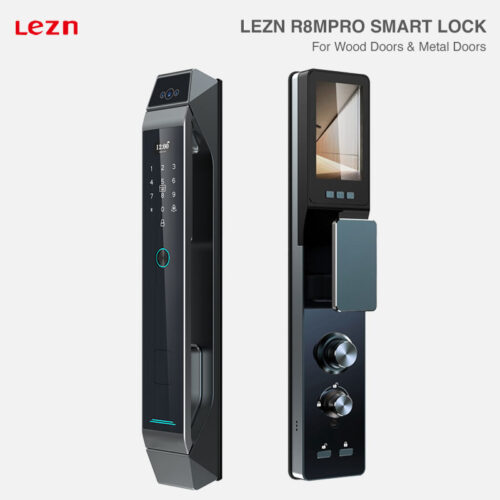In the age of interconnected devices, smart locks have become a cornerstone of modern home security. These devices offer convenience, flexibility, and enhanced control over who enters your home. However, as with any technology connected to the internet, smart locks are not immune to the threat of hacking. The good news is that manufacturers are continually evolving their security measures to stay one step ahead of cybercriminals. In this blog, we’ll explore how today’s smart locks are designed to defend against hacker attacks and what you can do to ensure your home remains a fortress.
1. Encryption: The First Line of Defense
One of the most critical features of any smart lock is encryption. Modern smart locks use advanced encryption protocols, such as AES (Advanced Encryption Standard) with 128-bit or 256-bit keys, to secure communication between the lock and its connected devices (e.g., smartphones, hubs, or routers). This ensures that even if a hacker intercepts the data, it will be virtually impossible to decipher.
Many smart locks also employ TLS (Transport Layer Security) to encrypt data transmitted over the internet, adding an extra layer of protection against man-in-the-middle attacks. Without the proper encryption keys, hackers are left with nothing but gibberish.
2. Multi-Factor Authentication (MFA)
To prevent unauthorized access, many smart locks now support multi-factor authentication. This means that in addition to entering a password or using a fingerprint, users may need to verify their identity through a secondary method, such as a one-time code sent to their phone or email. MFA significantly reduces the risk of hackers gaining access, even if they manage to steal your password.
3. Regular Firmware Updates
Smart lock manufacturers are increasingly aware of the importance of keeping their devices up to date with the latest security patches. Many modern smart locks are designed to receive automatic firmware updates, ensuring that any newly discovered vulnerabilities are promptly addressed. Users are also encouraged to enable these updates to maintain the highest level of security.
4. Anti-Tamper Alerts
Some smart locks are equipped with sensors that detect physical tampering, such as attempts to pick the lock or remove it from the door. When such activity is detected, the lock can send an immediate alert to the homeowner’s smartphone, allowing them to take action before a breach occurs. Additionally, some locks feature built-in alarms that sound when tampering is detected, deterring would-be intruders.
5. Secure Wireless Protocols
Smart locks often rely on wireless communication protocols like Bluetooth, Wi-Fi, or Zigbee. To prevent hackers from exploiting these connections, manufacturers use secure pairing methods and frequency-hopping techniques to make it difficult for attackers to intercept signals. For example, Bluetooth-enabled smart locks often use BLE (Bluetooth Low Energy) with randomized MAC addresses to prevent tracking and spoofing.
6. Limited Access Codes
Many smart locks allow homeowners to create temporary or limited-access codes for guests, service providers, or delivery personnel. These codes can be set to expire after a certain time or after a specific number of uses, minimizing the risk of unauthorized access. Some locks even allow users to monitor when and how these codes are used, providing an additional layer of oversight.
7. Penetration Testing and Third-Party Audits
Reputable smart lock manufacturers often subject their products to rigorous penetration testing and third-party security audits. These tests simulate real-world hacking attempts to identify and address potential vulnerabilities before the product reaches the market. Look for smart locks that have been certified by recognized security organizations or have undergone independent testing.
8. User Education and Best Practices
While manufacturers are doing their part to enhance security, users also play a crucial role in protecting their smart locks. Simple steps like using strong, unique passwords, enabling two-factor authentication, and regularly updating the lock’s firmware can go a long way in preventing unauthorized access. Additionally, users should avoid sharing access codes or granting permissions to untrusted individuals.
9. Integration with Secure Ecosystems
Many smart locks are designed to integrate with broader smart home ecosystems, such as Amazon Alexa, Google Assistant, or Apple HomeKit. These platforms often have their own security measures in place, such as end-to-end encryption and strict access controls. By choosing a smart lock that works within a secure ecosystem, users can further reduce the risk of hacking.
10. The Future of Smart Lock Security
As technology continues to advance, so too will the security features of smart locks. Emerging technologies like biometric authentication (e.g., facial recognition or vein pattern scanning) and blockchain-based access control are already being explored as potential solutions to enhance security further. Additionally, AI-driven anomaly detection systems could soon be integrated into smart locks to identify and respond to suspicious activity in real time.
Conclusion
While no system is entirely hack-proof, modern smart locks are designed with a multi-layered approach to security that makes them incredibly resilient against cyber threats. By combining advanced encryption, multi-factor authentication, regular updates, and user vigilance, today’s smart locks offer a level of protection that rivals traditional mechanical locks—and in many cases, surpasses them.
As you consider investing in a smart lock, be sure to research the product’s security features, read reviews, and choose a reputable brand. With the right precautions, you can enjoy the convenience and peace of mind that comes with knowing your home is protected by cutting-edge technology.
So, is your front door ready to join the smart security revolution? The future of home security is here, and it’s smarter—and safer—than ever.
Smart Door Lock
Smart Door Lock
Smart Home Lock
Smart Home Lock








